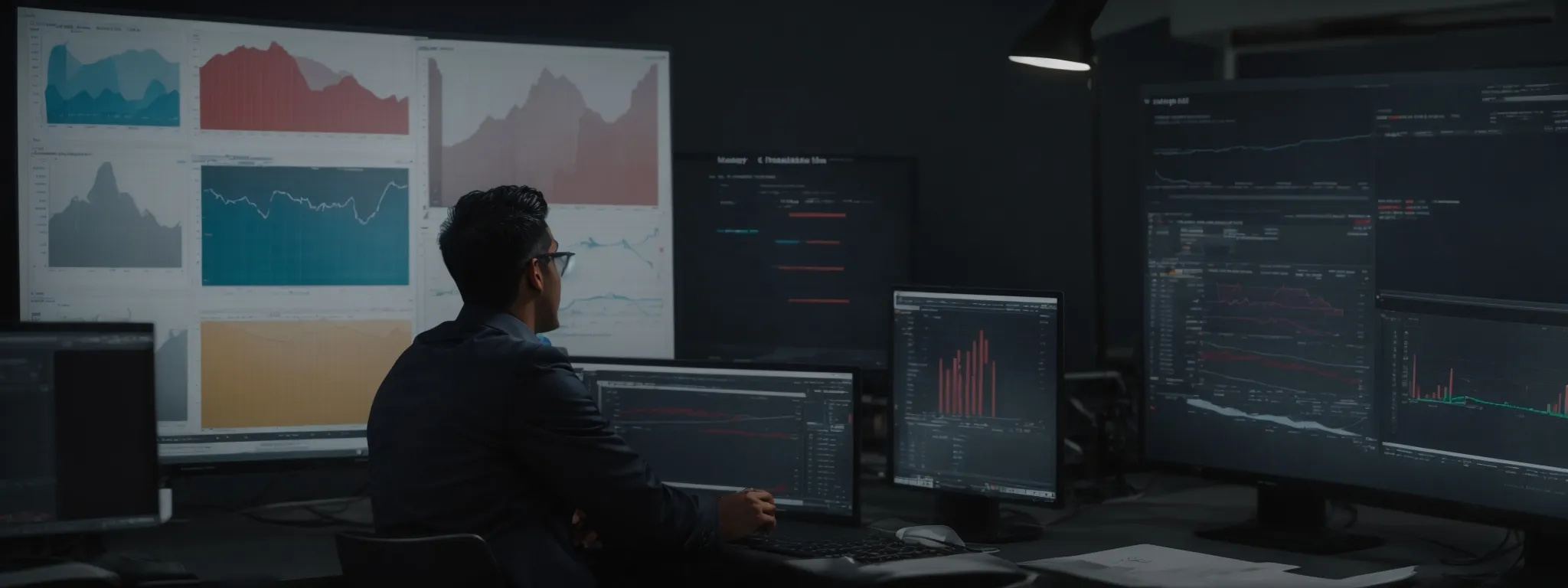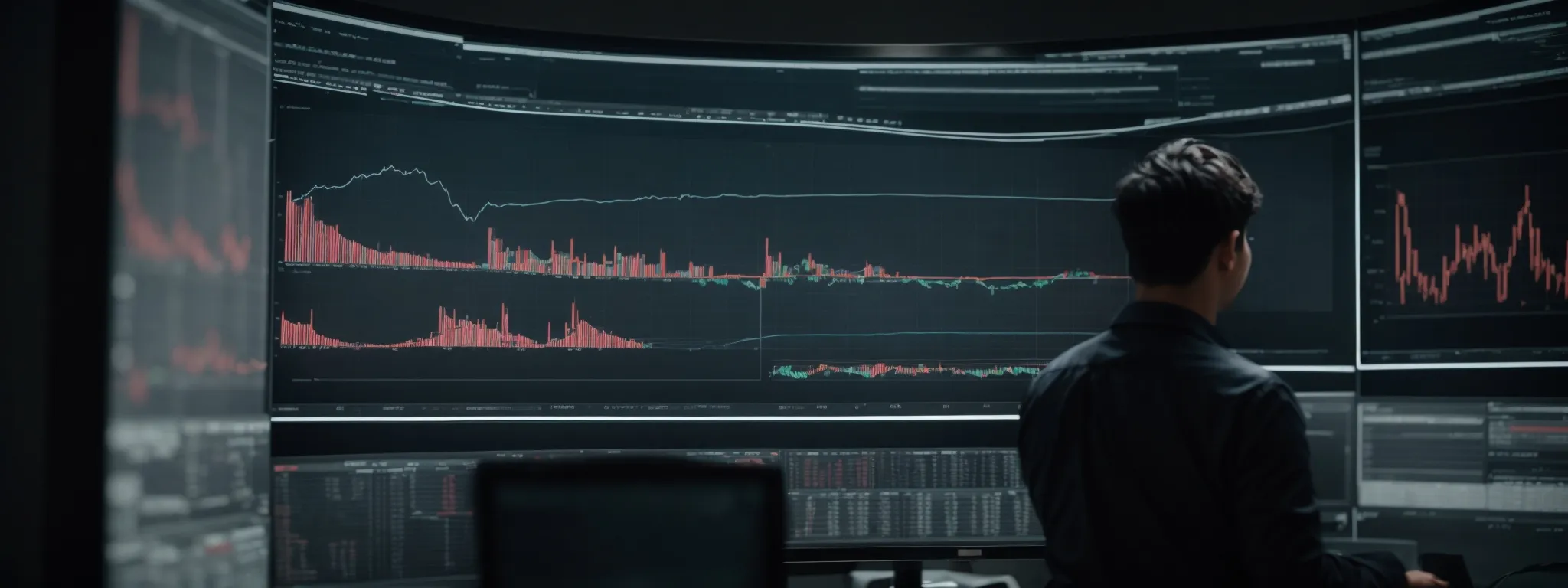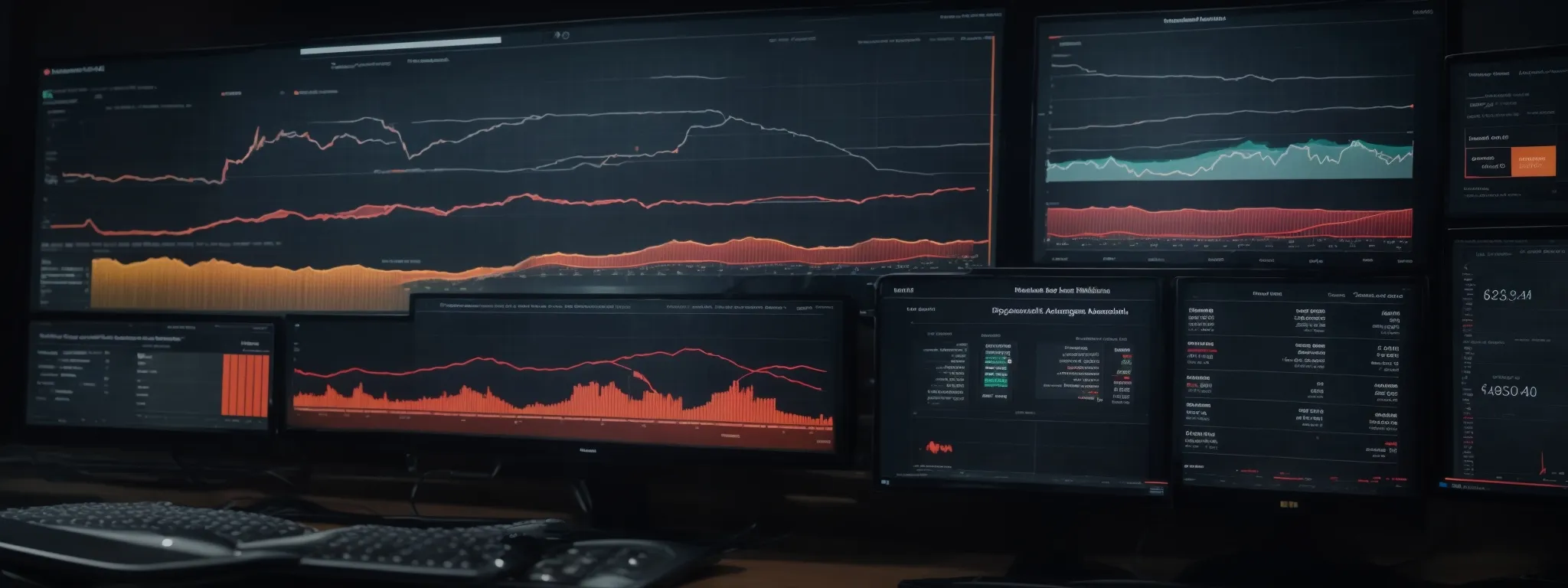What Is ROI in Marketing
Understanding Marketing ROI: Definition and Importance In the fast-paced digital economy, discerning the true impact of marketing efforts on the bottom line is more crucial than ever. […]
Understanding Marketing ROI: Definition and Importance
In the fast-paced digital economy, discerning the true impact of marketing efforts on the bottom line is more crucial than ever.
Marketing ROI, or return on investment, furnishes executives with a clear picture of how marketing activities translate into tangible business growth.
By carefully examining this key performance indicator, companies can make informed decisions that enhance their marketing efficiency and customer lifetime value.
Keep reading to unravel the complexities of measuring marketing success and the strategies that can maximize your marketing investment.
Key Takeaways
- Marketing ROI Is a Critical Financial Metric for Assessing the Profitability and Efficiency of Marketing Efforts
- Establishing Benchmarks and Setting Realistic ROI Goals Allows Organizations to Strategically Guide Their Marketing Investments
- Overcoming Attribution Complexities and Adapting to Consumer Behavior Shifts Are Key for Precise Marketing ROI Analysis
- Advanced Tools Like LinkGraph’s SearchAtlas SEO Software Can Enhance the Measurement and Optimization of Marketing ROI
- Future ROI Methodologies Will Likely Focus on Leveraging Real-Time Data and Predictive Analytics for Dynamic Marketing Strategies
What Is ROI in Marketing?

Return on Investment, or ROI, stands as a pivotal beacon in the realm of marketing, guiding businesses in assessing the efficacy of their marketing endeavors.
It offers an invaluable insight into the profitability of marketing efforts by quantifying the returns garnered from each dollar invested.
Understanding marketing ROI goes beyond mere number-crunching; it involves dissecting the components that contribute to both gains and costs, ensuring a company’s marketing program can be fine-tuned for maximum impact.
While it shares a scale with other performance metrics, ROI distinguishes itself by providing a direct line of sight to the financial success of marketing tactics, thereby influencing strategy and allocation of resources across campaign efforts.
As organizations navigate their digital marketing journeys, the scrutiny of ROI becomes indispensable in shaping decisions that propel both short-term results and long-term customer relationships.
Breaking Down the Components of ROI
At its core, the ROI formula encapsulates a relatively straightforward premise: calculating the net profit derived from marketing activities against the costs associated with them. It is a fundamental expression that relates the gain from an investment to the cost of the investment, showcasing the efficiency of marketing expenditures.
The evaluation of ROI in marketing hinges on a meticulous identification and analysis of two principal elements: revenue growth attributable to marketing and the aggregate cost of marketing efforts. A precise measurement grants executives a transparent view into the profitability imprinted by distinct marketing channels:
- Determine the gross profit achieved by subtracting the cost of goods sold from the sale revenue.
- Isolate the production costs and marketing spend directly linked to the marketing campaign in question.
- Employ the ROI formula to juxtapose the incremental gross profit against the sum total of marketing costs, yielding the marketing ROI (MROI).
This systematic approach to dissecting ROI allows marketing managers to gauge not just the financial returns, but also inform strategic decisions and cultivate robust customer lifetime value.
ROI vs. Other Performance Metrics
When considering ROI vs. other performance metrics, it’s imperative to note the unique perspective ROI provides on financial returns. Metrics such as conversion rates or click-through rates offer data on specific aspects of marketing performance, but ROI captures the overarching impact on a company’s bottom line.
By contrast, key performance indicators (KPIs) such as brand awareness or customer engagement levels focus primarily on the qualitative success of marketing initiatives. While these are significant, they do not translate directly into financial terms like ROI, which squarely addresses revenue growth against marketing spend.
| Metric | Focus | Direct Financial Implication |
|---|---|---|
| ROI | Revenue growth vs. Marketing spend | Yes |
| Conversion Rate | Percentage of conversions per interaction | No |
| Brand Awareness | Recognition and recall of the brand | No |
The Significance of Understanding Marketing ROI

Grasping the significance of marketing ROI is not just a measure of profit and loss, but a strategic tool that greatly influences business decisions and budgetary considerations.
It acts as a critical indicator for executives, allowing them to weigh the effectiveness of past initiatives and to steer current and future marketing investments accordingly.
Understanding ROI equips firms with the foresight to channel their marketing budget tactically, ensuring that funds are judiciously allocated to those channels showing the most promise for yielding a commendable return.
Overall, this knowledge underpins an organization’s ability to refine its marketing strategy, optimize resource distribution, and enhance economic success.
How ROI Impacts Business Decisions
Insight into the ROI from marketing campaigns directly steers executive decision-making, significantly impacting where and how a company elects to invest its marketing capital. With precise ROI data, companies can pivot away from underperforming marketing activities and reinforce those driving substantial financial returns, thereby optimizing their marketing investment and enhancing sales growth.
Determined by solid ROI analytics, businesses can also finetune marketing activities to better resonate with target audiences, amplifying marketing efficiency and increasing the lifetime value of their customer base. As a cornerstone of strategic planning, ROI informs which touchpoints require expansion, adjustment, or innovation, ensuring that marketing funds are not just spent, but invested for maximum impact.
The Role of ROI in Budget Allocation
Mastering ROI is instrumental for organizations when determining the allotment of their marketing budget. By leveraging ROI data, companies identify the marketing channels that propel revenue growth and allocate funds strategically to maximize future gains.
This meticulous approach ensures that the marketing budget supports initiatives with the highest potential for financial return, enhancing overall business performance and profitability:
- Triangulation of high ROI campaigns directs the flow of investment towards those initiatives.
- Allocation of resources is continuously refined to support strategies driving measurable success.
Armed with insights drawn from ROI analysis, marketing teams can advocate for more substantial investments in programs that demonstrate a proven track record, establishing a virtuous cycle of reinvestment and reward.
Delving Into the Calculation of Marketing ROI

Peeling back the layers to comprehend the calculation of marketing ROI involves a keen focus on adopting and applying a definitive formula that captures the essence of a campaign’s financial efficiency.
This fundamental computation serves as the bedrock for marketers to illustrate concrete examples of profitability and make data-driven decisions that align with their organizational goals.
From assessing the tangible success of a PPC Google Ads strategy to quantifying the impact of an email marketing campaign, the versatility of the ROI formula allows it to adapt to various scenarios, providing a clear depiction of investment outcomes.
The Formula for ROI in Marketing
The groundwork of determining marketing ROI rests upon a succinct yet potent ROI formula: (Net Profit from Marketing Efforts / Cost of Marketing Efforts) x 100. This calculation provides the percentage of revenue that exceeds the original marketing investment, affording businesses with a numeric value that spells out profit efficiency.
Implementing this formula, companies are empowered to dissect the profitability of their marketing strategies, from a PPC Google Ads campaign to a broad-scale content marketing launch. The resulting percentage not only informs a campaign’s success but also shapes future marketing decisions:
| Marketing Initiative | Cost of Marketing Efforts ($) | Net Profit from Marketing Efforts ($) | ROI (%) |
|---|---|---|---|
| PPC Google Ads Campaign | 20,000 | 60,000 | 200 |
| Content Marketing Launch | 15,000 | 45,000 | 200 |
Examples of ROI Calculation Scenarios
Imagine a scenario where a business launches a targeted email marketing campaign. By comparing the increment in sale revenue directly linked to the campaign against the total ad spend, the marketing team can ascertain the ROI. This process reveals the actual profitability achieved through customer responses and conversions attributed to tailored email communications.
In another instance, consider an organization leveraging a sophisticated PPC Google Ads strategy. The marketing team examines the surge in visitors and subsequent conversion rate increase, measuring these figures against the PPC expenses. The analysis of these factors presents a clear picture of the campaign’s overall success, guiding the team in evaluating the campaign’s contribution to the company’s bottom line.
Benchmarks for Successful Marketing ROI

Discerning what constitutes a triumphant return on investment (ROI) is a fundamental aspect of any digital marketing initiative.
Establishing benchmarks is essential not only for evaluating current performance but also for setting future aspirations that align with industry standards.
By identifying these standards and setting realistic ROI goals, organizations can develop a clear roadmap to guide their marketing investments.
This allows for a strategic and data-driven approach that focuses on continuously improving marketing efficacy, customer engagement, and, ultimately, sales conversions.
Identifying Industry Standards for ROI
Industry standards for marketing ROI provide a quantifiable benchmark that companies can leverage to compare and contrast their marketing performance against the competitive landscape. These benchmarks serve as key indicators for gauging whether an organization’s marketing effectiveness is at par, lagging, or exceeding the norm within their industry.
| Industry | Average Marketing ROI | Desired ROI Benchmark |
|---|---|---|
| Retail | 4:1 | 5:1 or higher |
| Technology | 5:1 | 10:1 or higher |
| Healthcare | 6:1 | 7:1 or higher |
In setting these ROI targets, it becomes imperative for companies to align their marketing ventures with the expected outcomes prefaced by industry insights: organizations tailor their campaigns to not merely meet but to strive towards surpassing these benchmarks, securing a competitive edge through enhanced marketing ROI.
How to Set Realistic ROI Goals
Establishing realistic ROI goals demands a nuanced understanding of a company’s historical marketing performance in conjunction with market dynamics. It necessitates setting attainable targets that are ambitious yet grounded in historical data, industry trends, and the particular constraints and opportunities inherent to the company’s market position.
Organizations must incorporate a margin for market fluctuations and unforeseen variables into their ROI objectives to manage expectations realistically. This foresight allows companies to adapt their strategies and resources dynamically, ensuring goals remain relevant and achievable amidst a backdrop of ever-evolving market conditions.
Overcoming Common Hurdles in ROI Measurement

In the multifaceted world of digital marketing, effective measurement of Marketing Return on Investment (ROI) emerges as a cornerstone of a sound business strategy.
Yet, charting a clear path through the thicket of data demands confronting challenges, such as untangling the complexities of attribution and staying agile amid evolving consumer behaviors.
Mastering these aspects is imperative; it equips organizations with the acumen to dissect the effectiveness of marketing programs, ensuring each investment is optimally aligned with the dynamic landscape of customer interactions and market trends.
As businesses endeavor to amplify their marketing ROI, the mastery of these challenges becomes a testament to their strategic agility and commitment to sustained growth.
Dealing With Attribution Complexities
In the quest to quantify marketing success, one notable challenge is the complexity of attribution. Organizations are often faced with the task of accurately distributing credit for conversions across various touchpoints in a customer’s journey.
This challenge is not insurmountable, though: with sophisticated analytical tools like LinkGraph’s SearchAtlas SEO Software, businesses can navigate the intricacies of multi-channel attribution. By harnessing this technology, they gain a clearer understanding of which interactions are truly driving conversions:
- Identify each customer touchpoint and assign value to these interactions based on their contribution to the final conversion.
- Aggregate data from all channels to form a comprehensive view of the customer journey, allowing for more precise attribution and stronger marketing ROI measurement.
Overcoming Attribution Complexities ensures that businesses are not just tracking, but also crediting the right factors for their success, enabling more informed strategy optimizations and resource allocations.
Adapting to Changing Consumer Behaviors
Adapting to changing consumer behaviors is an essential component of ROI analysis in marketing. The digital marketing landscape is volatile, with customer preferences, online behavior, and engagement patterns shifting rapidly due to new technologies and trends.
Businesses committed to refining their ROI must hone their capacity to respond and evolve with these changes. Incorporating Adaptive Strategies in Marketing programs becomes crucial to maintaining relevance and achieving sustained returns.
- Monitor emerging trends and evolving customer expectations to inform marketing strategies.
- Analyze consumer data regularly to identify shifts in behavior and preference.
- Implement flexible marketing tactics that can quickly adapt to new consumer insights.
Strategies to Amplify Marketing ROI Effectively

In the intricate tapestry of digital marketing, garnering a robust marketing return on investment (ROI) is a mission that demands precision, foresight, and strategic finesse.
To elevate marketing ROI, one must embark on a multifaceted journey, fine-tuning campaign targeting to resonate profoundly with the intended audience, and streamlining efforts for heightened efficiency.
It calls for a commitment to rigorous testing and data analysis, which uncovers the seeds of campaign success.
Moreover, it considers the cultivation of customer relationships and creative development as assets that contribute to a brand’s enduring success.
With a nexus of advanced analytics and keen marketing acumen, businesses can not only optimize their ROI but transform insights into a dynamic fuel for future marketing triumphs.
Refine Your Marketing Campaign Targeting
In the realm of digital marketing, refining campaign targeting is recognized as a key strategy to bolster marketing ROI. By utilizing advanced tools like LinkGraph’s SEO content assistant and content planning tool, businesses can gain granular insights into audience behaviors and preferences, thereby enabling the customization of campaigns to align with specific user interests and needs.
Focusing on high-intent keywords identified through meticulous keyword research strategies, marketers can guide their campaigns to reach the right demographic, increase conversion rates, and ultimately drive impressive revenue growth. This targeted approach ensures that marketing funds are deployed in the most impactful manner, contributing significantly to the organization’s bottom line and enhancing customer lifetime value.
Streamline Your Marketing Efforts
Streamlining marketing efforts is a vital strategy that enables businesses to boost their Marketing ROI with efficiency and precision. Leveraging tools such as LinkGraph’s SearchAtlas SEO Software, companies can automate and optimize various aspects of their digital marketing, including PPC Google Ads and SEO campaigns, ensuring that resources are focused on high-performance activities.
By Harnessing the Power of Data-Driven Insights and analytics, organizations can eliminate redundancies, focus on high-impact tactics, and fine-tune their marketing efforts to resonate with their target audience. This concentrated approach not only maximizes the return on every dollar spent but also contributes to sustained revenue growth and improved marketing efficiency.
Leverage Testing for Campaign Success
Leveraging testing for campaign success emerges as a critical strategy to Optimize Marketing ROI. A/B testing, or split testing, enables businesses to compare different versions of their marketing materials to determine which performs better with their target audience.
This approach to empirical analysis allows companies to refine campaign elements methodically, resulting in enhanced engagement and conversion rates:
- Identify key variables within marketing materials to test, such as headlines, call-to-actions, and images.
- Deploy simultaneous variations to segments of the target audience, maintaining control groups as benchmarks.
- Analyze the performance data to deduce the most effective version for broader rollout.
It is through such rigorous experimentation that organizations can discern the optimal messaging, design, and strategic direction, thereby propelling their marketing campaigns towards greater returns on investment.
Invest in Customer Relationships
Investing in customer relationships stands as a crucial strategy for amplifying marketing ROI. By fostering robust connections with customers, businesses can drive repeat sales and referrals, boosting sale revenue without incurring proportional marketing costs.
Companies that prioritize customer engagement often observe an elevation in customer lifetime value as these nurtured relationships translate into sustained loyalty and advocacy, further solidifying the foundation for long-term profitability and ROI growth.
Employ Creative Development
Employing creative development within digital marketing is a transformative strategy that should not be underestimated. It entails the continual crafting and refinement of message, design, and overall aesthetic to capture the essence of the brand and engage the target audience effectively.
A company’s investment in creative innovation can be a driving force in bolstering marketing ROI, as creativity distinguishes campaigns in the crowded digital landscape. This leads to a more memorable brand experience, higher engagement rates, and, consequently, increased conversion and loyalty:
| Creative Element | Engagement Rate Increase | Subsequent Conversion Uplift |
|---|---|---|
| Revamped Brand Messaging | 15% | 10% |
| Enhanced Visual Design | 20% | 12% |
Thus, an organization that places a premium on creativity not only distinguishes itself from competitors but also sets the stage for a stronger return on their marketing investments. By fostering an environment where creativity flourishes, a company can inspire its marketing team and captivate its audience, leading to a positive impact on its bottom line.
Optimize ROI With Analytics
Analytics stand as the backbone of efficient marketing ROI optimization, enabling businesses to decode data into actionable insights. By utilizing the vigorous analytical capabilities of LinkGraph’s SearchAtlas SEO Software, organizations can dissect campaign data to reveal which strategies yield the highest return, thus reinforcing marketing programs with precision inspired by credible, real-time data.
Meticulous application of analytics facilitates an iterative process of improvement by pinpointing areas that affect the ROI most significantly: from visitor traffic patterns to conversion optimization. Embracing analytics equips businesses with the intelligence to refine their approach, ensuring marketing investments translate into tangible growth in sales and customer acquisition.
| Campaign Element | Analytics Used | Improvement Noted |
|---|---|---|
| PPC Google Ads | Conversion Tracking | 15% increase in ROI |
| SEO Content | Organic Traffic Analysis | 20% more visitor engagement |
| Email Campaigns | Click-Through Rate Analysis | 10% higher conversion rate |
The Influence of Digital Trends on Marketing ROI

In the dynamic digital arena, the pulses of social media and the advances in AI and automation undeniably influence Marketing Return on Investment (ROI).
These digital trends possess the power to reshape how brands interact with their audiences and streamline marketing processes to unprecedented levels of efficiency.
Social media platforms have evolved into essential drivers of brand engagement and customer conversion, with their capacity to unlock granular audience insights directly affecting ROI potential.
Simultaneously, AI and automation have emerged as catalysts, transforming data into actionable strategies, thereby enhancing the efficacy and impact of marketing campaigns.
Such technological advancements compel businesses to continuously adapt their marketing approaches to remain influential in a competitive digital economy.
The Impact of Social Media on ROI
The rise of social media has substantially impacted the way marketing ROI is conceived and measured. Platforms like Facebook, Twitter, and Instagram offer direct channels to target audiences, enabling brands to engage with users in a more personalized and interactive manner that can significantly drive sale revenue.
Through tailored social media marketing campaigns, businesses can leverage the power of data analytics to craft strategies that foster brand awareness and invoke action. This approach empowers companies to convert passive scrollers into active customers, witnessing a noteworthy improvement in their ROI:
- Strategic content creation on social channels increases user engagement, directly influencing conversion rates.
- Precise audience targeting through social media ads enables businesses to reach potential customers more efficiently, thus optimizing ad spend.
- Real-time interaction with customers on social platforms strengthens brand loyalty and supports customer retention, amplifying lifetime value and overall ROI.
AI and Automation’s Effect on Marketing Efficiency
AI and automation are revolutionizing marketing efficiency by streamlining operations and personalizing customer experiences. These innovations are elevating predictive analytics and decision-making, propelling organizations towards achieving higher marketing ROI through increased precision in targeting and optimized resource allocation.
By automating repetitive tasks and employing AI for complex data analysis, companies are able to deploy more effective marketing campaigns with reduced human error. The synergy of AI and automation not only enhances the speed of execution but also boosts the marketing team’s capability to focus on strategic and creative tasks that drive ROI growth.
Case Studies: ROI Triumphs in the Marketing World

Examining the triumphs of Marketing Return on Investment (ROI) through real-world case studies provides a tangible backdrop to the grand narrative of success in both expansive corporate landscapes and the dynamic world of small businesses.
These stories unveil how prominent brands have harnessed the power of ROI to catapult their success, crafting benchmarks that shape industry standards.
Likewise, they shine a light on the wins and strategic insights gained by smaller ventures, where every marketing dollar must count towards tangible growth and survival.
These narratives not only serve as inspiration but also as practical guides that demonstrate the pivotal role of ROI in driving informed decisions and sustainable success in the ever-evolving marketplace.
How Big Brands Leverage ROI for Success
Big brands understand the power of strategic marketing investments and frequently harness ROI as the guiding metric for success. They utilize ROI calculations to fine-tune significant marketing moves, from launching innovative products to entering new markets, ensuring that each decision promotes sustainable growth and competitive advantage.
These established organizations capitalize on comprehensive data resources to harness nuanced understandings of campaign performance, leading to nuanced customer insights and smarter resource allocation. The knowledge gained from ROI analytics empowers these brands to adapt swiftly to market changes and optimize campaigns for maximum impact and profitability.
Small Business ROI Wins and Insights
Small businesses, with their limited resources, benefit exponentially from a keen focus on marketing ROI, which serves as a barometer for their strategic decisions and expenditure justifications. Such entities often witness transformative success stories when they engage in precise tracking of marketing ROI, optimizing their ad spend, and iteratively improving their promotional strategies for maximal impact.
The insights gleaned from measuring marketing ROI allow these smaller ventures to identify lucrative opportunities and pivot away from less effective tactics, ensuring that their limited marketing budgets yield substantial customer engagement and revenue growth. This critical evaluation supports their sustainability in the competitive market by augmenting decision-making with robust data-driven evidence.
The Future of Marketing ROI Measurement

As the digital marketing landscape continues its relentless evolution, the methodologies for measuring marketing ROI are poised to keep pace, undergoing transformations that will refine their precision and applicability.
Predicting these shifts is crucial for businesses seeking to stay at the vanguard of marketing strategy, ensuring that they can effectively quantify their marketing impact and justify investments.
Likewise, the continuing maturation of how data informs ROI represents a key facet of this evolution, redefining the interaction between analytics and marketing success.
This subsection will explore the trajectory of these advancements and their implications for the art of gauging the true value of marketing efforts.
Predicting Shifts in ROI Methodologies
The progression of ROI methodologies is anticipated to be spearheaded by the integration of advanced analytics and machine learning. The objective is to transform the voluminous data generated by digital marketing activities into enhanced predictive insights, enabling marketers to anticipate trends and measure the potency of their initiatives with heightened accuracy.
As a result, businesses will likely adopt a more granular approach to ROI measurement, harnessing real-time data to fine-tune their marketing strategies on the fly. This will entail a shift from static, retrospective analysis to a dynamic, forward-looking model that incorporates market feedback instantaneously:
| Current ROI Methodologies | Future ROI Methodologies |
|---|---|
| Monthly or quarterly analysis | Real-time, continuous analysis |
| Historical data dependency | Live market feedback integration |
| Manual calculation frameworks | Automated predictive modeling |
The Evolving Relationship Between Data and ROI
The symbiosis between data and marketing ROI is undergoing a formidable evolution, spurred by technological advancements in data analysis. As businesses amass an ever-increasing volume of actionable consumer insights, the way ROI is measured and understood becomes more nuanced and strategic, offering a refined lens through which decisions are made and successes are evaluated.
Indeed, data now serves as the pivotal axis of marketing ROI, with each consumer interaction and digital footprint fueling a more sophisticated understanding of campaign performance. This data-centric approach enables marketing professionals to craft campaigns that are not only creative but also precisely targeted and measurable, ensuring a sustained competitive edge in the digital marketplace:
- Consumer interactions are meticulously analyzed for patterns that drive strategic marketing decisions.
- Digital footprints serve as indicators for optimizing campaign targeting and measurement.
- Data-driven insights foster the creation of campaigns that balance creativity with precision.
Conclusion
Understanding Marketing ROI is fundamental in assessing the effectiveness and profitability of marketing investments.
It not only provides a clear financial perspective on revenue growth versus marketing spend but also influences strategic business decisions and resource allocation.
A sound grasp of marketing ROI allows companies to fine-tune their marketing efforts, focusing on the most profitable channels and tactics, and leading to more efficient budget management.
This knowledge equips businesses to adapt their strategies, invest in customer relationships, and leverage data analytics for continuous improvement.
As a result, mastering marketing ROI is vital for optimizing performance, driving sales growth, and maintaining a competitive edge in the evolving digital landscape.














































































